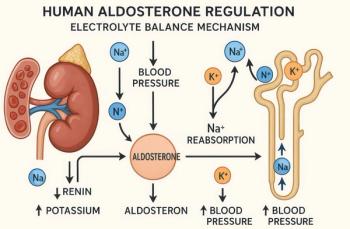
'Prehypertension' Called Heart Risk in Postmenopausal Women
WASHINGTON -- An observational study of 60,000 postmenopausal women found that about 40% have prehypertension, and that level of blood pressure was associated with a 58% higher risk of cardiovascular death than for normotensive women.
WASHINGTON, Feb. 19 -- An observational study of 60,000 postmenopausal women found that about 40% have prehypertension, and that level of blood pressure was associated with a 58% higher risk of cardiovascular death than for normotensive women.
In a 7.7-year follow-up of 60,785 postmenopausal women in the Women's Health Initiative, the increased risk extended to a 76% increase in nonfatal myocardial infarction, a 93% increased stroke risk, and an increased risk of heart failure, regardless of ethnicity.
So reported Judith Hsia, M.D., of George Washington University here, and colleagues, in the Feb. 20 issue of Circulation, Journal of the American Heart Association. They used the definition of prehypertension as systolic blood pressure from 120 to 139 mm Hg or diastolic pressure from 80 to 89 mm Hg, as specified in 2003 by the Joint National Committee on Prevention, Detection, Evaluation, and Treatment of High Blood Pressure (JNC7).
Normal blood pressure as defined by the JNC7 is less than 120/80, while hypertension is defined as 140/90 or higher or current use of antihypertension medication.
At the start of the study, 26% had normal blood pressure, 39% had prehypertension, and 35% had hypertension, while ethnicity was not a factor.
Prehypertension was present at baseline in 39.5%, 32.1%, 42.6%, 38.7%, and 40.3% of white, black, Hispanic, American Indian, and Asian women, respectively (P
To some extent, they said, the answer depends on the individual clinical outcome under consideration and the eye of the beholder. A 93% increase in stroke risk seems clinically relevant, whereas a 36% increase in hospitalized heart failure risk may be less compelling.
The increased cardiovascular risk with prehypertension is certainly smaller than the risk associated with having diabetes (hazard ratio, 2.58; CI, 2.32 to 2.86) but is greater than that associated with smoking (HR, 1.34; 95% CI, 1.26 to 1.43). Since smoking is pretty much unchallenged as a cardiovascular risk factor; perhaps prehypertension should be afforded the same acceptance, the study authors suggested.
Limitations of the study, the authors wrote, include the absence of men and younger adults. Prehypertension appears to be associated with other traditional and nontraditional risk factors. For example, the prevalence of diabetes and current smoking did not differ in normotensive and prehypertensive individuals.
The clustering of conventional risk factors with prehypertension raises the possibility that the increased cardiovascular risk was not due entirely to blood pressure but to other risk characteristics that were not measured. These observations, they said, underscore the importance of global cardiovascular risk assessment.
Summing up, Dr. Hsia's team wrote, that both lifestyle and pharmacological interventions reduce progression from prehypertension to hypertension, but such intervention has not been shown to reduce cardiovascular events. These findings support the role of prudent lifestyle, which favorably affects other risk factors, including progression to diabetes and low-density lipoprotein cholesterol levels.
The results of this study, and of others, "provide support for recommendations aimed at reducing blood pressure at an earlier stage of this disease," the investigators concluded. "Prospective trials are needed to evaluate the efficacy, feasibility, and cost-effectiveness of global primordial cardiovascular risk reduction."
Newsletter
Enhance your clinical practice with the Patient Care newsletter, offering the latest evidence-based guidelines, diagnostic insights, and treatment strategies for primary care physicians.
















































































































































































































































































